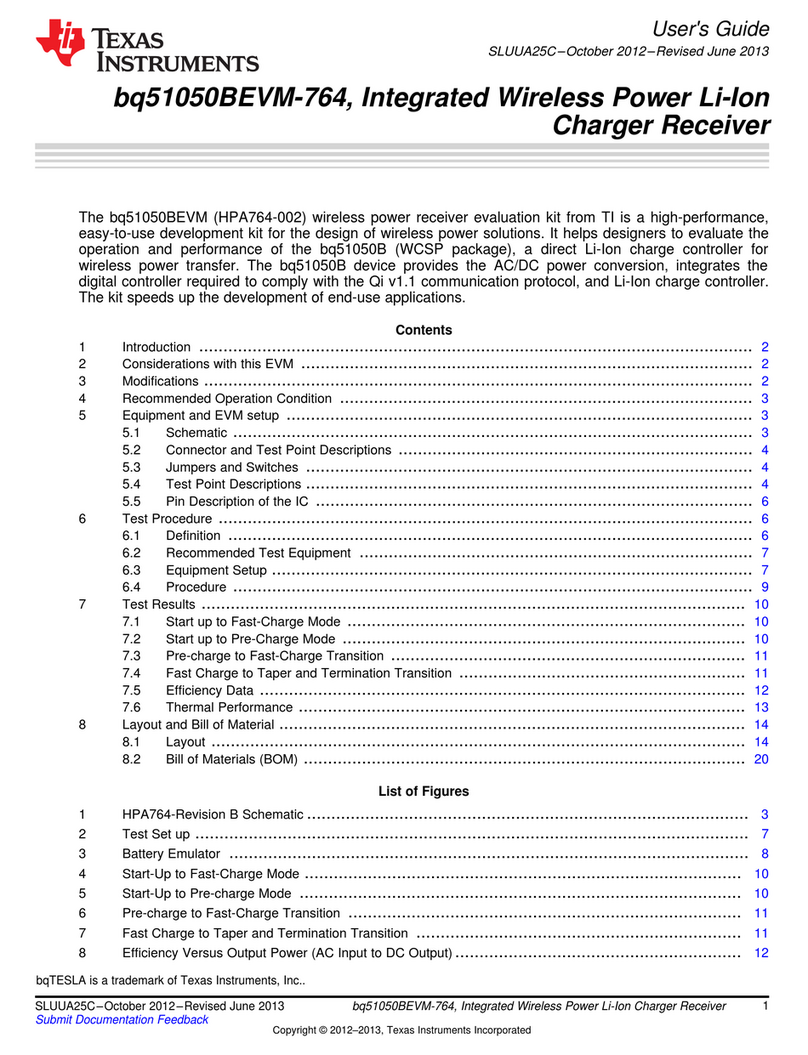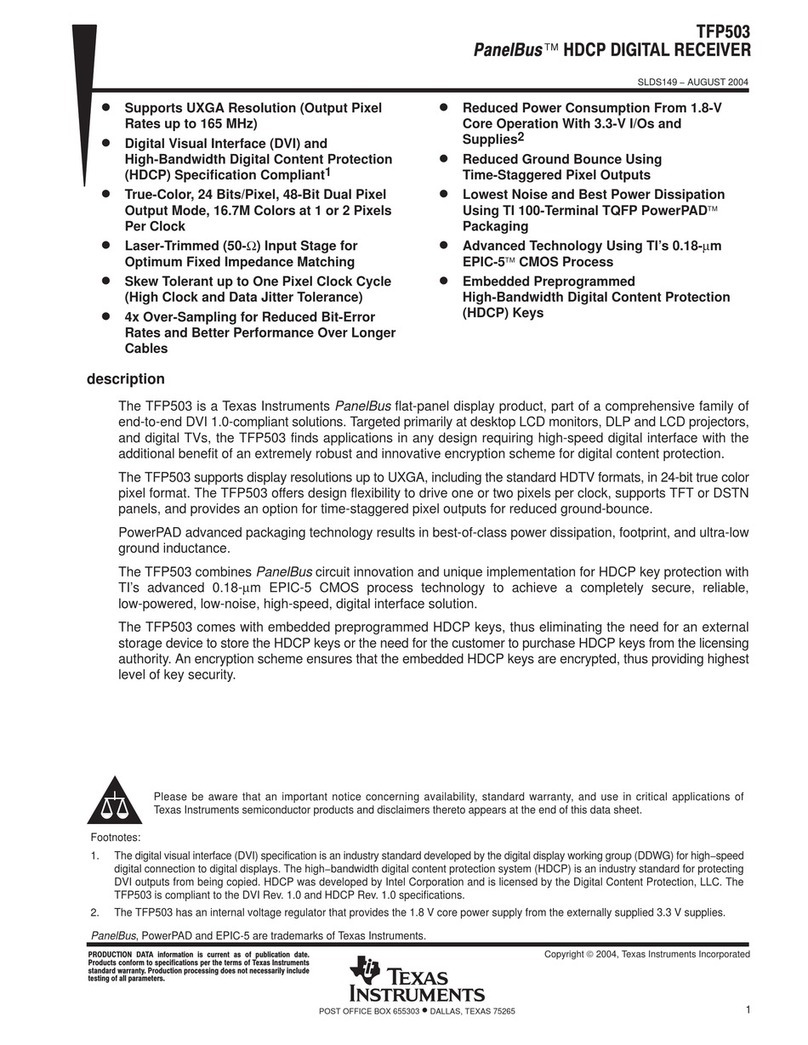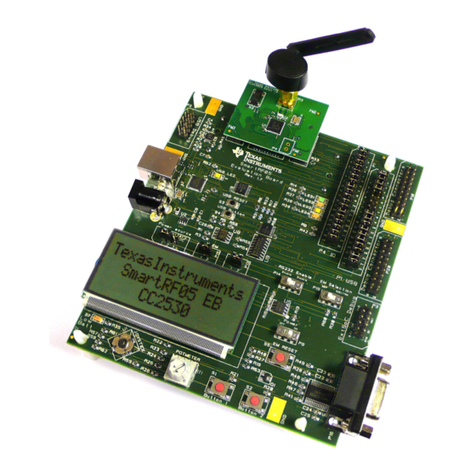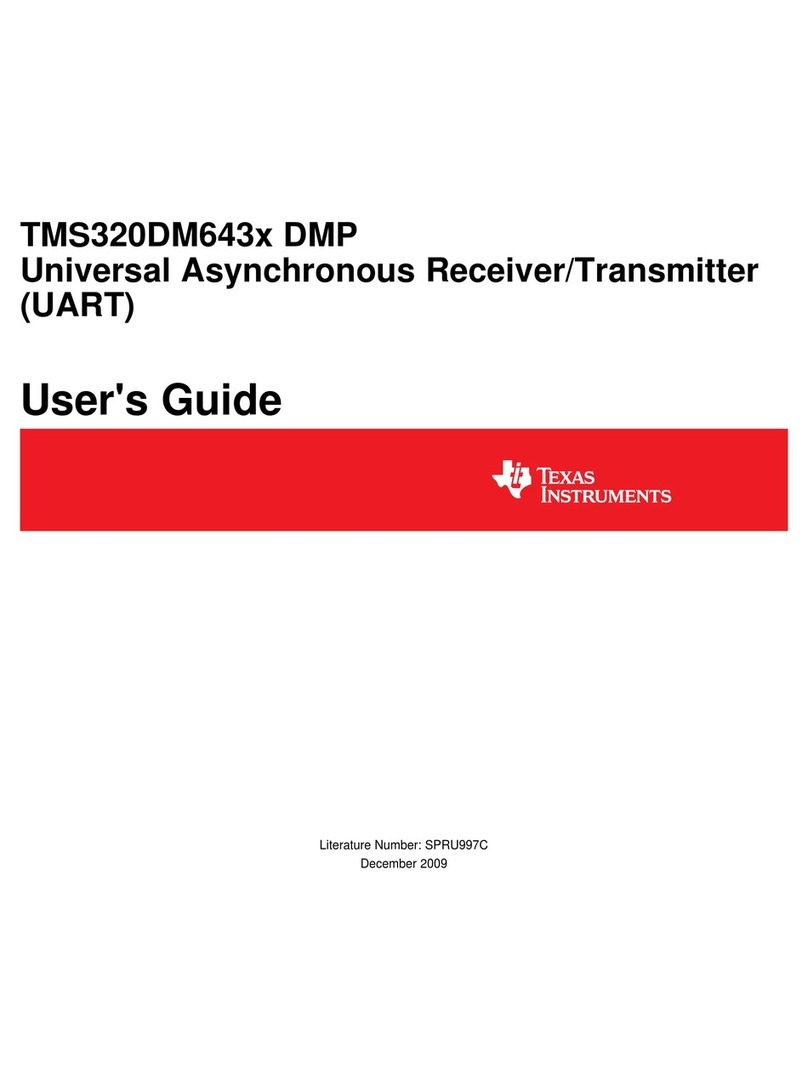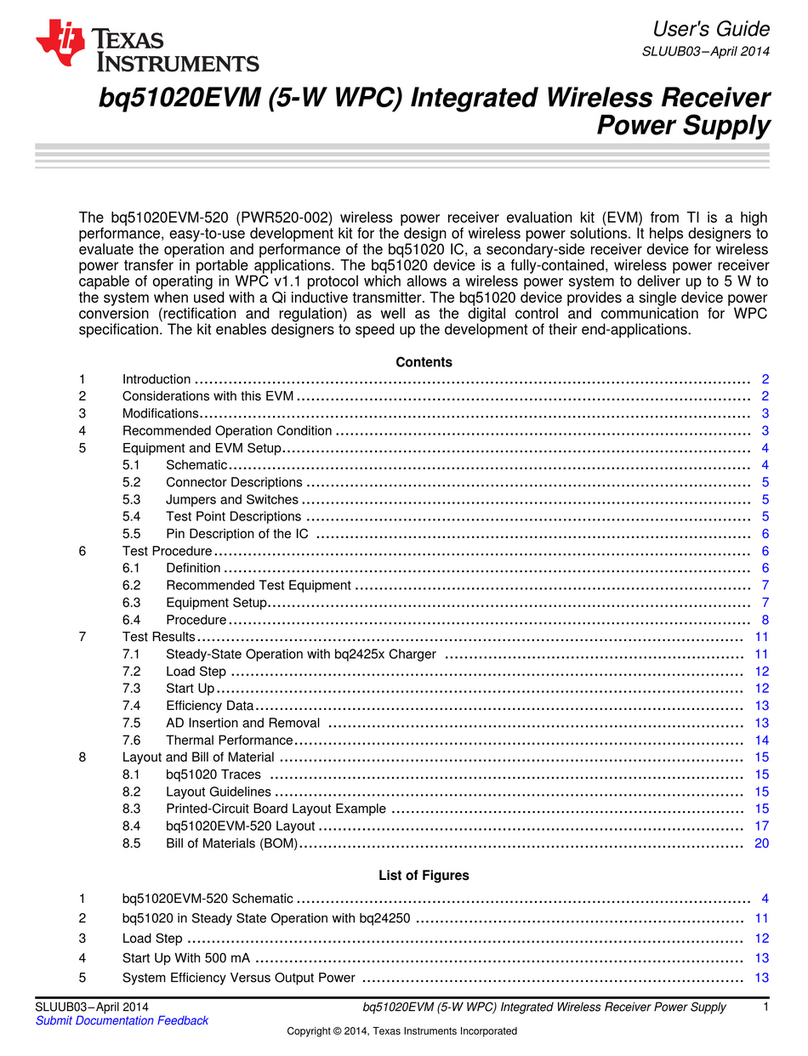
1–3
1.4 Terminal Functions
TERMINAL
NAME NO.
CEX 6 I Capacitor external. CEX is used for gain control of the internal analog amplifier. An external
capacitor connected from CEX to GND determines the gain of the amplifier. If the internal
amplifier is set for unity gain or the device is not used as a receiver, CEX is left unconnected.
GND 4 Ground
IN 7 I/O Depending on the device configuration, IN provides inverted OUT data, is used as a receiver
input, or is used to enter data during programming.
–When the device is configured as a transmitter, IN provides the complement of the OUT
data stream and is considered to be noninverted. IN provides its own internal pullup, so
no external pullup is required when IN is used to transmit the data. It is cleared to 0 in
standby.
–When the device is configured as a receiver, IN is used to receive the code.
–When the device is in the program mode, IN is used to enter serial data into the device
shift registers that load into the EEPROM memory.
OSCC 2 I/O Oscillatorcapacitor.Dependingontheconfiguration,OSCCisusedforexternaltransmit/receive
clock input, control of the internal oscillator, to place the device into program mode, input for a
high-voltage EEPROM programming pulse, or the internal analog amplifier in the test mode.
–When the device is used as a transmitter or receiver using an external clock, the external
clock is connected directly to OSCC. (OSCR must be held low to use an external clock.)
–When the device is used as a transmitter or receiver and the internal oscillator is used,
a capacitor from OSCC to GND and a resistor from OSCR to GND determines the
free-running internal oscillator frequency. In addition, the internal oscillator triangular
waveform can be seen at OSCC in this configuration.
–When the device is in the data-loading phase of the programming mode, OSCC must be
held at VCC + 0.5 V.
–After the device has been loaded with data in the programming mode, the internal
registers transfer the data to the EEPROM permanently by applying a high-voltage
programming pulse to OSCC.
–When OSCC is held at VCC + 0.5 V and three or more low pulses are applied to OSCR,
the device is in the test mode and the output of the internal analog amplifier can be
measured at TIME.
OSCR 1 I Oscillator resistor. Depending on the configuration, OSCR is used as an external program/
read clock input or to control the internal clock frequency.
–When the device is in the program/read mode, OSCR is connected to an external clock.
–When the device is in the transmit or receive mode, a resistor connected from OSCR to
GND(alongwithacapacitorfromOSCCtoGND)determinesthefrequencyoftheinternal
clock.
OUT 5 O OUTisan open-drainoutput.Forthat reason,itisnecessary toconnectapullup resistor toOUT.
Dependingon the configuration,OUTprovides transmit data, acts as the outputforthereceiver,
or provides the serial output of the stored data in memory during the program and read modes.
–When the device is configured as a transmitter, the transmitted data is seen at OUT and
is in a 3-state output mode during standby (OUT is floating). While transmitting, the data
from OUT is considered inverted.
–When the device is configured as a valid transmission receiver (VTR) receiver, OUT
provides a VTR pulse and goes low in the standby mode.
–Whenthe deviceisconfiguredasa Q-statereceiver, OUT toggleshighandlow eachtime
a valid code is received.
–During the program mode, OUT provides the current data from the EEPROM memory
when the new data is clocked into the device.

